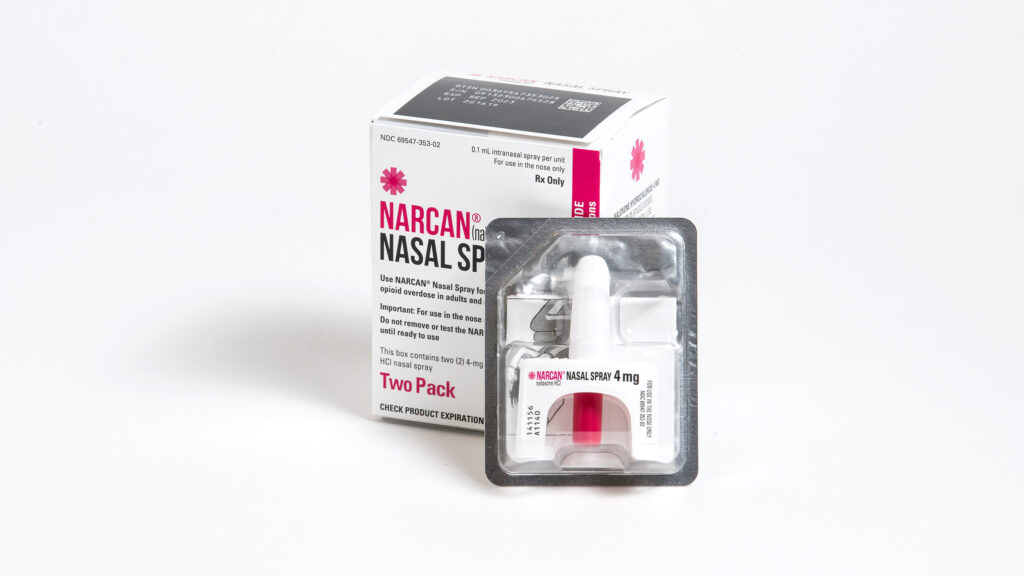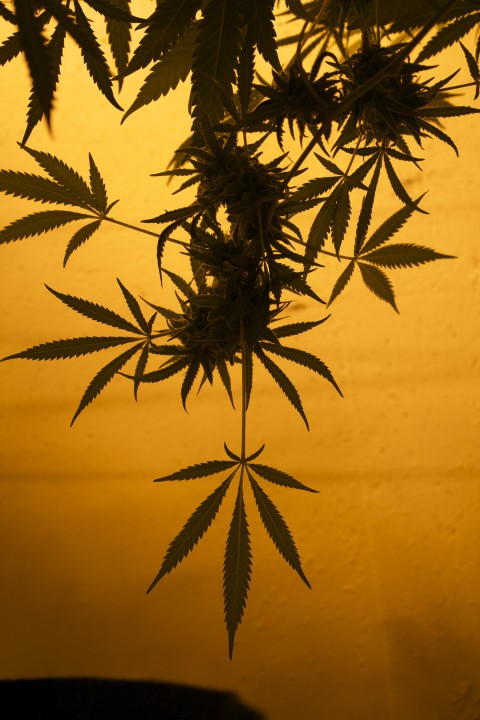Oxycodone vs. Hydrocodone: What’s the Difference?

Hydrocodone and oxycodone have many similarities. They’re both in the same drug class and designated as schedule II drugs with high potential for abuse and addiction by the U.S. Drug Enforcement Administration (DEA). Oxycodone and hydrocodone are both prescription opioids used to treat moderate to severe pain. They’re also both drugs of abuse that have played a large role in the opioid epidemic. Though their similarities outweigh their differences, there are a few distinguishing characteristics between hydrocodone vs. oxycodone. What Is Oxycodone? Oxycodone is a narcotic analgesic, which is a pain medication containing opioids. It goes by these brand names: Oxycodone is a semi-synthetic opioid derived from the poppy plant. It is combined with thebaine to produce chemical reactions that give it pain-relieving properties. Doctors prescribe this opioid drug for severe pain from cancer, surgery, injuries, and dental procedures. Because of oxycodone’s high potential for abuse and addiction, there is an effort in the medical community to only prescribe when non-opioid medications will not be effective. What Is Hydrocodone? You may know hydrocodone by its brand name. These include Vicodin, Lortab, Norco, and Lorcet. Most of the hydrocodone’s forms also contain acetaminophen. Doctors may prescribe hydrocodone to relieve pain in terminally ill patients and those who have had surgery or dental procedures. Hydrocodone is a semi-synthetic opioid. It’s created in labs but synthesized from the poppy plant. Like oxycodone, many doctors are prescribing hydrocodone less since the opioid epidemic shined a spotlight on prescription painkillers. What Is the Difference Between Oxycodone and Hydrocodone? There are more similarities than differences between oxycodone and hydrocodone. They’re both powerful opioids used to treat pain with a high potential for abuse. However, there are a handful of differences between oxycodone and hydrocodone, which include: Source Hydrocodone and oxycodone are both synthetic opioids synthesized in labs. However, oxycodone is derived from thebaine while hydrocodone is derived from codeine. Uses Both oxycodone and hydrocodone are prescribed to treat severe pain, however, because hydrocodone comes from codeine, it can be used as a cough suppressant. Structure The chemical structure of oxycodone and hydrocodone are the same except that oxycodone has one more oxygen atom than hydrocodone. A small difference, but a difference nonetheless. Side Effects There is a lot of overlap in hydrocodone and oxycodone side effects. Some studies show that the effects of hydrocodone may cause more stomach pain and gastrointestinal issues like constipation. Common side effects of oxycodone that aren’t as pronounced in hydrocodone use include drowsiness, dizziness, and headaches. Form Oxycodone is prescribed in 10, 20, 40, and 80 mg extended-release forms. It’s also dispensed in 5 mg immediate-release capsules. Oxycodone comes in the oval form in several different colors and can also be injected in a liquid form. Hydrocodone comes in 2.5, 5, 7.5, and 10 mg tablets that are usually white, yellow, or orange. It also comes in liquid form and transdermal patches. High People who abuse opioids say that there is a difference in the type of high between oxycodone and hydrocodone. One anonymous survey of over 3,000 people with opioid use disorders found that 75% of opioid abusers used oxycodone or hydrocodone. Of those, 54% said they preferred oxycodone to hydrocodone because oxycodone highs were stronger than hydrocodone highs. They believed that the acetaminophen in hydrocodone was a deterrent to taking more of the drug in order to enhance the high. Hydrocodone Vs. Oxycodone Addiction Treatment There isn’t much difference between treating hydrocodone and oxycodone abuse. They’re both opioids, and opioid addictions require medical detox and a structured treatment program for long-term recovery. Common components of opioid abuse treatment include: Medical Detox When you quit opioids after abusing them for a period of time, your central nervous system needs to rebalance itself without the drugs. This can cause severe withdrawal symptoms. Detox in a treatment center ensures that you’re safe and as comfortable as possible while you eliminate opioids from your body. You’ll have medications to ease withdrawal symptoms and a medical team monitors your vitals and comfort level around the clock. Inpatient Treatment Residential treatment is ideal for opioid addiction recovery because it provides space away from triggers and substances. This allows you to focus on yourself and gain the relapse prevention skills you need to maintain sobriety in everyday life. After inpatient treatment, you may move through lower levels of care such as a partial hospitalization program, intensive outpatient program (IOP), and finally, outpatient treatment that meets just once a week. Medication-Assisted Treatment (MAT) Doctors prescribe medication-assisted treatment for some people recovering from opioid abuse. These medications attach to brain receptors in the same way as opioids. They can ease strong cravings and withdrawal symptoms without getting you high. This allows you to focus on addiction treatment without discomfort or intense urges to use drugs. Continuing Care After you leave structured treatment, you’ll need an aftercare plan that supports sobriety as you transition back into everyday life. Components of continuing care often include: Looking for Help? If you or a loved one is struggling with substance abuse, call us for a free, confidential consultation. We’ve seen thousands of clients take back their lives from addiction. It’s possible, and we can help. Footprints to Recovery offers medically supervised drug and alcohol detox as well as inpatient and outpatient addiction treatment. We’ll help you understand the reasons behind your drug abuse, so you can begin addressing them. You’ll engage in evidence-based therapies that help you heal physically, mentally, and spiritually, and you’ll gain the healthy coping skills needed for long-term recovery. References
Drug Use During Pregnancy: How Dangerous Is It?

If you’re using drugs while pregnant, please know that you are not alone and that there is compassionate, effective treatment available to help you and your unborn baby. It’s important to get treatment because abusing drugs or alcohol when pregnant puts you at risk for several physical and mental health issues and can be dangerous or deadly for the fetus. Substances like illicit drugs, tobacco, alcohol, and prescription drugs have been proven unsafe during pregnancy by a number of studies. Unfortunately, it’s a public health issue that continues to be a problem. Around 1 in 20 women use at least one addictive substance during pregnancy. Pregnant women most frequently use tobacco, followed by cannabis, alcohol, and other drugs. Studies in pregnant women show that if you abuse one substance, the likelihood of using at least one other substance increases by 40%. Learn why the effects of drug use during pregnancy put you and your fetus at increased risk for pregnancy complications and health issues — and how to get help. How Do Drugs Affect the Fetus and Baby? There is no way to know how drug abuse, cigarette smoking, or drinking alcohol, will affect your fetus until after the fact. The only surefire way to keep you and your baby safe during pregnancy is avoiding substance use completely. Like oxygen and nutrients, drugs and alcohol also cross the placenta and reach the fetus. This means that when you take drugs or drink alcohol, your baby takes them too. This increases the risk of several adverse outcomes, including: #1 Stillbirth Some research finds that smoking during pregnancy or using substances like prescription pain relievers, marijuana, and illicit drugs may double or triple the risk of stillbirth. When your baby dies more than 20 weeks into a pregnancy it’s considered a stillbirth. Usually, this occurs while your baby is still inside your womb, but can occasionally happen during labor and birth. #2 Low Birth Weight Babies born at a weight less than 5.5 pounds are considered to have a low birth weight. This puts them at risk for several adverse effects including: One study published in Pediatric Research found babies of moms who smoked marijuana were 375 grams lighter than their drug-free counterparts. Another study found that exposure to drugs like opioids in the womb doubled a baby’s risk for low birth weight and a small-for-gestational-age diagnosis. #3 Preterm Labor and Delivery Preterm birth puts your baby at risk for many of the same problems as a baby with low birth weight. One study found that drug abuse during pregnancy greatly increases your risk of premature birth. Mothers using cocaine during pregnancy or multiple substances were at the highest risk. Several studies have also shown a positive correlation between marijuana use during pregnancy and babies born early. A study by the University of Adelaide found babies born to marijuana users were five times more likely to be born preterm than women who did not smoke pot. #4 Poor Cognitive Function Brains of developing fetuses are affected by maternal drug use. Substance abuse can impact: These conditions can lead to poorer cognitive performance, emotional problems, and behavioral issues in childhood. #5 Mental Health Issues Youth who were exposed to drugs in the womb are at higher risk for mental health issues like depression, addiction, and ADHD. This is due to both biological and environmental factors of maternal drug use. For example, living in a home with parental drug abuse is sometimes linked with neglect or emotional issues that can fuel mental health disorders. The way that substance abuse affects the fetus’ developing brain can also increase the risk of mental illness symptoms. #6 Sudden Infant Death Syndrome (SIDS) A tragedy that affects thousands of babies a year, sudden infant death syndrome (SIDS) occurs in children under one years old. This type of infant death usually happens during sleep, with no previous warning signs. While the causes of SIDS are still being researched, some studies suggest that using illegal drugs during pregnancy can increase the risk. Much of the research on SIDS and drug abuse has centered on cocaine. Some researchers have found that using cocaine during pregnancy increased the risk of SIDS by 15%. Other researchers found a rate of 8.4 SIDS deaths out of every 1000 births to cocaine users. #7 Neonatal Abstinence Syndrome (NAS) Many babies born to mothers addicted to drugs like opioids will experience withdrawal symptoms in the first 48 hours, and sometimes longer. According to the Substance Abuse and Mental Health Services Administration (SAMHSA), NAS may include: #8 Birth Defects Drugs that are considered to be “teratogenic” have been associated with an increased risk of birth defects. The type of birth defect depends on: Teratogens can be found in medicines, chemicals, or toxins. They can also be linked to a medical condition or infectious agent. Illicit drugs containing teratogens include alcohol and cocaine. How Do Drugs Affect a Pregnant Woman? Drug abuse doesn’t just have serious consequences for your fetus. When you abuse drugs and alcohol, you’re at risk for both the regular dangers of substance abuse as well as health issues specifically related to your condition. Pregnancy complications can be painful and dangerous and may include: Addiction Treatment During Pregnancy Addiction treatment for pregnant women may begin with medical detox. It’s imperative that you don’t detox without medical help if you’ve been taking drugs or drinking during pregnancy. There are specific medical protocols for tapering or detoxing pregnant women depending on what substance you’ve abused and individual health factors. Only a physician can help determine what type of detox is safest for you and your developing baby. Your maternal health and proper prenatal care should be a priority during and after detox. Addiction is a complex disease that requires medical and behavioral interventions to achieve long-term sobriety. After detox, it’s critical to receive specialized addiction and mental health treatment that addresses the reasons behind your substance use. Often circumstances like past trauma, co-occurring mental health disorders,
The 5 Most Addictive Drugs

In the last couple of decades, several studies have explored why some drugs are more addictive than others. Researchers typically base their evaluations on factors like: While there are some variances, the majority of research concludes that these five substances are the most addictive drugs. 1. Heroin and Other Opioids Considered by some to be the most addictive drug in the world, opioids account for around 70% of overdoses a year. Opioids like heroin, fentanyl, and prescription drugs have a high potential for abuse and addiction because of the way they work on the brain’s reward system. These types of drugs release excessive amounts of dopamine in the brain. High dopamine levels are what provide the rush and feeling of euphoria that people who abuse opioids are trying to achieve. Heroin addiction develops quickly because of: Opioid addiction treatment often involves medication-assisted treatment (MAT). These are prescription drugs that bind to opioid receptors and ease cravings and withdrawal symptoms. Without discomfort and a strong urge to use, you’re better able to focus on getting the behavioral health treatment and relapse prevention skills you need to stay sober. 2. Cocaine Heroin makes the headlines these days, but cocaine abuse is still alive and well in America. A national survey reports about 1.5 million people over age 12 used cocaine within the past month. In 2020, cocaine overdose deaths increased by 26.5% according to the CDC. Researchers continue to study the specific processes that make cocaine so addictive. A highly addictive stimulant drug, cocaine produces feel-good chemicals in the brain that may make you feel energetic, giddy, and confident. Over time, cocaine abuse drains your dopamine supply. This can lead to mental health symptoms like depression as well as feelings of agitation without cocaine. You may start a cycle of self-medicating these symptoms by taking more crack cocaine. The problem is that in the long run, this only worsens them. Cocaine addiction treatment may begin with medical detox depending on how long you’ve been abusing it and your individual make-up. Medications are usually prescribed to ease withdrawal symptoms like anxiety and insomnia. Antidepressants may also be used for a length of time as the brain rebalances its neurotransmitters. Drug rehab centers may include contingency management and cognitive-behavioral therapy in your treatment plan, which have been proven to be effective cocaine addiction treatments. 3. Alcohol Over 14 million U.S. adults met the criteria for an alcohol use disorder in 2019. Alcohol abuse changes the brain in some of the same ways as other addictive substances. It boosts your serotonin and dopamine levels, providing the relaxed, happy feeling you may seek in drinking. Regular alcohol abuse creates strong associations in your brain with people, places, and feelings tied to alcohol. Just seeing or feeling these things can be like having a drink in front of you and cause an unbearable urge to drink. Because alcohol is socially acceptable and readily available, there are endless opportunities to feed an alcohol addiction. You\’re at higher risk for alcohol addiction if: When you’re addicted to alcohol, you have withdrawal symptoms when you stop drinking. These can be painful and disturbing, which may lead you to reach for a drink to ease these symptoms. This perpetuates the addiction cycle. Alcohol addiction treatment begins with alcohol detox. It can be dangerous and deadly to quit alcohol cold-turkey on your own. At a treatment center, medical professionals oversee the detox process and ease withdrawal symptoms with medications. After detox, specialized treatment that involves behavioral therapy, family therapy, medications as clinically appropriate, and relapse prevention training supports long-term recovery. 4. Methamphetamine Some meth abusers say crystal meth produces a high like none other. The drug works by flooding the brain with extremely high amounts of dopamine. The high is quick and strong. Very high levels of dopamine can make you feel euphoric and invincible. As you continue to abuse meth, the intensity of that high grows weaker. Many meth abusers say they keep trying to chase the intense meth high they got the first time they used meth. They know they’ll never obtain it, but that doesn’t stop them from trying. This cycle is how you can quickly develop an addiction to meth and tolerance to its pleasurable effects. After a meth binge, you’ll inevitably crash. Each time you binge and crash, your “normal state” gets worse. Taking crystal meth over and over can cause the brain to rewire itself. It stops being able to produce regular amounts of dopamine on its own. It also thinks it needs excessive amounts of dopamine to function. When you get used to having meth in your system, you no longer feel as “high” on your usual amount of methamphetamine. In order to get the desired high, you keep increasing meth intake. In time, this cycle repeats itself. It’s the ongoing spiral of rising tolerance and increasing intake that leads to meth addiction. Sometimes mental disorder symptoms are part of the psychosis that meth causes. Conditions like depression can come about because of changes in dopamine from meth effects. Other times, you may already have a mental health disorder prior to using it. Meth abuse may be your way of self-medicating mental disorder symptoms. Meth addiction treatment involves treating these symptoms and other underlying causes of substance abuse. 5. Nicotine Smoking is the leading cause of preventable disease, death, and disability. Though health experts have warned the public that nicotine is as addictive as heroin and cocaine, every day around 1,600 youth start smoking. Around 40 million Americans smoke and 16 million of them have a serious illness because of it. Though nicotine doesn’t provide the high of harder drugs, it does produce a quick surge of dopamine that activates your reward system in similar ways. This continues to bring you back for more to get the same feeling. Over time, nicotine changes your brain like other drugs by altering neurotransmitters. This can cause dependency and withdrawal symptoms when you try to quit smoking.
Pros & Cons of Narcan

Narcan is an FDA-approved drug that can reverse the effects of an opioid overdose. The drug was only available by prescription until recently. With the ongoing opioid crisis, most states have made Narcan available to anyone to purchase from a pharmacy without a prescription. The U.S. Surgeon General recommends these people have Narcan on hand for overdose prevention because of their heightened risk of opioid overdose: What Is Narcan? Narcan is a brand name for naloxone. It’s an opioid antagonist. Naloxone binds to your brain’s opioid receptors and blocks and reverses the effects of the opioids causing overdose. Opioids like heroin and morphine slow down the central nervous system. In large doses, opioids can slow these systems down so much that you experience respiratory failure. Naloxone can stop an opioid overdose by reversing the depressing effects of opioids on breathing and the central nervous system. Narcan is given by nasal spray or injection. It acts quickly — within two to three minutes — but it doesn’t last long. The blocking effects on opioid receptors can wear off in 30 to 90 minutes. Opiate overdose symptoms can return when Narcan stops working. Administering naloxone is only the first step in saving the life of an individual who is overdosing. Call 911 immediately in the event of a drug overdose. They need medical help too. Don’t let fear of getting in legal trouble stop you. Most states have Good Samaritan laws that offer some immunity for the individual who reports the overdose and the victim. After recovering from an overdose, it’s imperative that the victim enter addiction treatment so they can take part in behavioral therapies and get the support and life skills they need to get sober and stay sober. Narcan reverses the effects of all types of opioids like heroin, morphine, and oxycodone, but it will not reverse the effects of other drug overdoses like those from benzos or cocaine. It’s important to know when and how to use Narcan. Talk to your pharmacist or health provider. There are online resources as well that provide individual, community, and family education and training. Pros of Narcan The number one benefit of Narcan is that it saves lives. Over 93,000 people died from overdose deaths in 2020 and 69,710 of those involved opioids. Narcan gives people who are overdosing more time to get the medical help needed to prevent organ damage and death. It can also be a step toward getting the help they need to turn their life around. Surviving a drug overdose can be a wake-up call for some people and carve a path toward addiction treatment and recovery. Cons of Narcan Some critics of Narcan believe it gives people addicted to opioids a false sense of security. They argue that if addicted people know they always have Narcan to fall back on, they have less motivation to quit using heroin and other opioids and may even use higher doses. A problem with this thinking is that while Narcan is very effective, there are some cases where it doesn’t work. There could be other cons as well. Some people may have adverse side effects of naloxone, such as allergic reactions that cause hives and swelling in the throat, face, or lips. It can also wear off prematurely when used to treat respiratory depression from opioids. Naloxone can lead to fluid in the lungs and cardiac arrhythmias in people treated with opioids for severe pain. When naloxone reverses the effects of opioids, it will cause opioid withdrawal symptoms that could include: Supporters of Narcan argue that when weighing the pros and cons of Narcan, withdrawal symptoms are a small price to pay for surviving an overdose with your life intact. They also propose that serious complications for people who experience adverse symptoms from naloxone are rare. Get Help For Opioid Addiction Narcan can save a life, but opioid addiction treatment is needed to turn that life around. Narcan is not a treatment for addiction. Without following an overdose with behavioral therapy, support, and relapse-prevention skills, you’ll likely find yourself in the same situation again. A drug and alcohol addiction treatment program will help you address the underlying reasons why you abuse substances. These often include co-occurring mental health disorders, trauma, and environmental factors. Once you understand why you’re self-medicating with drugs, you can learn healthier ways to cope with challenges. An addiction treatment program will teach you relapse-prevention skills and help you begin building a strong support system in sobriety. Footprints to Recovery offers medical detox programs and inpatient and intensive outpatient options for opioid addiction. Our substance abuse treatment approaches are evidence-based and focus on relapse prevention. Addiction recovery from opioids is difficult but very possible. We’ve seen thousands of clients do it. Call us today to learn more about our addiction treatment centers. References
Effects of Molly on the Body

Some people believe Molly is relatively safe compared to other drugs like heroin or cocaine. The truth is this “party drug” can have serious consequences that might surprise you. In one year alone, Molly was involved in 22,498 drug-related visits to the emergency room according to the National Institute on Drug Abuse. Beyond potentially sending you to the hospital, the emotional and physical health effects of Molly can impact you for the rest of your life. What Is Molly? Molly is a synthetic drug most frequently used by teenagers and young adults. It gained a reputation as a club drug in the 1990’s and has since been in regular attendance at music festivals, raves, and nightclubs. Molly goes by other names like: The street drug is most commonly referred to as ecstasy or molly. Ecstasy pills are brightly colored and have imprints on them to designate their brand or formula. Users say taking the drug gives them increased energy level and sex drive and makes them feel uninhibited and emotionally “warm.” However, many will find that the desired short-term effects aren’t worth the potential damaging long-term effects of ecstasy abuse. Effects of Molly on the Nervous System Ecstasy abuse affects the brain and central nervous system by changing your brain chemicals. The drug works on the brain’s reward center to release more of your natural feel-good chemicals than normal. This process is what gives you the high you feel from MDMA. With continued use of drugs that impact chemicals like dopamine, serotonin, and norepinephrine, your brain becomes depleted of them. It starts having a hard time producing normal amounts on its own because it’s become to rely on substance abuse to help. This can have several short-term and long-term effects on your central nervous system, including: Effects of Molly on the Respiratory System The effects of MDMA on the respiratory system is still a new area of research studies, but preliminary studies show users may be at risk for a few conditions. Some ecstasy users have experienced: Effects of Molly on the Circulatory System People who take ecstasy can put strain on their circulatory system that can result in several adverse effects. These include: Some of these risks, like heart attack, are tied to behaviors around the drug. For instance, many people use ecstasy to stay up late, dancing at clubs or raves. Dancing for long periods of time without enough fluids can lead to dehydration, which puts you at risk for electrolyte imbalances and heart attack. If you already have a heart condition, ecstasy and high-risk behaviors around it can lead to more serious heart issues. Digestive System One of the effects of drug abuse is havoc in your gut. Taking large amounts of ecstasy and other synthetic drugs can lead to uncomfortable side effects upon taking them or recovering from them (withdrawal symptoms). These may include: Endocrine System Drugs like Molly can disrupt the way your hormones work. Symptoms of ecstasy use that can impact the endocrine system may include: Other Dangerous Effects of Molly It’s important to note that these effects are only related to Molly. Many people who use Molly are also using other drugs. This can be a dangerous and deadly combination that will intensify the health risks of Molly and compound it with risks from other addictive substances. Another reason Molly can be dangerous is that since it’s a street drug, you have no way of knowing what makers have cut it with. It could be anything from bath salts or cocaine to meth or the deadly substance, fentanyl. This can put you at risk for toxic reactions or overdose depending on how your body reacts and how much you take. Get Help for Substance Abuse Ecstasy’s effects on the body and brain aren’t worth it. If you feel like you’re addicted to ecstasy, get help. Spending time in a drug rehab center can be a life-changing experience. There are reasons you’re turning to drugs and alcohol. Addiction treatment helps you address those reasons so you can live a healthier, more authentic life. You’ll learn relapse prevention skills and build a sober network of peers that can help you stay sober when you return to everyday life. Footprints to Recovery uses approaches like cognitive behavioral therapy and EMDR proven to help people struggling with addiction and co-occurring disorders (dual diagnosis) like depression and anxiety. Our staff are addiction and mental health experts who are passionate about your recovery. We’ve seen thousands of clients take back their lives from substance abuse. You can too. Call us today for a free consultation. References
Can Opioids Cause Pain? What Is Opioid-Induced Hyperalgesia?

Opioid-induced hyperalgesia (OIH) is a condition where the same medication that is prescribed to alleviate your pain causes more pain. After being on opioid therapy, people with OIH notice that pain sensitivity around their original ailment worsens and pain tolerance may be low in general. For example, say you’re a chronic pain patient taking opioids for back pain. If you develop OIH, you may feel like the medication isn’t alleviating your back pain anymore. You may also experience abnormal pain sensitivity to something as innocuous as a light touch. What Causes Opioid-Induced Hyperalgesia? Opioid-induced hyperalgesia involves complex changes in human molecular mechanisms. Opioids like oxycodone, morphine, and hydrocodone affect pain perception by working on brain receptors that receive pain signals. So, if you’re having back pain or other discomfort, these drugs block or decrease pain signals from reaching your brain. This process is what provides you relief from discomfort. Development of OIH occurs because of your body’s defense system. After chronic opioid use, the body tries to correct the discrepancy in pain receptors and the CNS signaling system by switching on other neural pathways and pain signals and making new connections. This can sometimes cause hyperactivation of nerve cells and pain receptors. When this happens, you no longer get relief from painkillers, and you feel over sensitive to pain in other parts of your body. Scientists are still trying to determine why some people are more likely to develop OIH as well as why some people experience it more quickly. Most cases of opioid-induced hyperalgesia result from chronic pain medicine use, however some people may develop OIH after short stints on painkillers or after acute opioid therapy. Research suggests OIH may have a genetic component, which could help explain why some develop it more quickly. In general, studies show that high doses of opioids over long periods of time often results in some increased pain sensitivity. Symptoms of Opioid-Induced Hyperalgesia Opioid-induced hyperalgesia presents differently. Some people may feel intense pain, while others have milder pain symptoms. The opioid dose and time it takes to develop OIH also varies. Symptoms of opioid-induced hyperalgesia may include the following: Opioid-Induced Hyperalgesia Vs. Opioid Tolerance The symptoms of opioid-induced hyperalgesia and opioid tolerance have some similarities, but the conditions are different. When you develop a tolerance to opioids, your body needs more of the drugs to get the desired effect. When your physician increases your pain meds, you typically feel some relief again. In cases of opioid-induced hyperalgesia, increasing opioid doses does not provide relief, and can make pain worse. As far as opioid tolerance, it’s a slippery slope between it and opioid addiction. The risk of opioid addiction increases if you have co-occurring mental health disorders or other underlying challenges. You may find that beyond physical relief, the effects of opioids also help numb emotional pain. Opioid use can escalate quickly, becoming a way to self-medicate. Because of their highly addictive nature, many physicians are moving away from using opioids for pain management except in cases of surgery and palliative care. How Do You Treat Opioid-Induced Hyperalgesia? There are a few approaches to treating OIH. Depending on how long you’ve been taking opioids, quitting cold turkey can bring on painful and dangerous withdrawal symptoms. Some physicians will taper your doses over a determined period of time. Another approach is switching to smaller doses of another opioid or a partial opioid agonist like buprenorphine. These treatments can sometimes minimize the pain that accompanies OIH during the transition to other pain management approaches. There’s some evidence that ketamine, an NMDA receptor antagonist, can be an effective OIH treatment. It can block the pain receptors that have become hypersensitive. Some physicians or treatment programs may use this. Other OIH treatments may include acetaminophen, antidepressants, gabapentin, and anti-inflammatory drugs. Get Help For Opioid Abuse If you’re using opioids for the wrong reasons, reach out for help. Around 21 to 29% of chronic pain patients misuse their prescription opioids according to The National Institute of Drug Abuse. Opioid abuse can cause long-term damage to your physical and mental health and have deadly consequences. In 2020, 69,710 people died from opioid overdoses. Don’t become a statistic. We can help. Get a free, confidential consultation by reaching out to us. References
What Is Marijuana Wax?

Over a decade ago marijuana wax made its way into the weed scene. This form of marijuana became especially popular with teens and young adults. Marijuana wax goes by several names like: The concentrated extracts in marijuana wax provide a much more intense high than other forms of cannabis. Marijuana wax is one of the most potent cannabis products. THC levels usually run around 60 to 80%. This makes it much stronger than other cannabis concentrates, which typically range around 17–28% THC levels — and that’s on the higher end. Marijuana wax is made through an extraction process. Parts of the marijuana plant are heated, extracting the THC and leaving an oily substance, butane hash oil. This is heated again resulting in the wax-like form of the drug. When manufactured illicitly, the process can be dangerous. The Drug Enforcement Administration (DEA) warns of several explosions and fires at THC extraction labs due to the volatile nature of the heating process to make marijuana wax. The most popular way to consume wax is to smoke cannabis wax with something called a dab rig. It’s a water pipe that has a heating chamber that allows you to turn a small dab of wax into a smokeable form. Vaping wax or adding tiny bits of it to a joint or pipe to smoke marijuana is also a common way to use weed wax. In addition to THC wax, there are CBD forms that don’t get you high. This type of marijuana wax is used for topicals, vaping, and eating. CBD wax goes through a crystallization process instead of the process that would make it psychoactive. Some people think anti-anxiety and anti-inflammatory properties are some of the benefits of cannabis wax in CBD form. What Does Weed Wax Look Like? As the name implies, marijuana wax looks like wax. It’s goldish, brownish, or yellowish in color. THC wax consistency is often flakey. It can feel soft or like clay. Some forms are gooey, and others are hard and solid. It depends on what form you’re taking it in. Weed wax is distributed in small containers or on wax paper. CBD wax is glassier in look and its finished product comes in many forms like lotions, oils, and lip balm. How Is Weed Wax Different From Other Marijuana? Marijuana wax has a much higher level of THC in it than herbal and hash forms. It gives the user an intense high, very quickly. Weed wax goes through a different process than other forms of the drug. THC is extracted from the cannabis plant and undergoes a heating or crystallization process to make the marijuana concentrates into a psychoactive form so you can smoke weed wax, or into a non-psychoactive form that is used by some to help certain ailments. Is Weed Wax Addictive? The notion that marijuana isn’t addictive is false. With the movement to legalize marijuana and the drug’s social acceptance, the very real dangers of marijuana are often clouded in the public’s perception. However, like other mind-altering substances, marijuana is still an illicit drug in several states and has a high potential for abuse. Many people develop an addiction to marijuana and require substance abuse treatment to get better. According to the National Institute on Drug Abuse, weed wax has such high levels of THC that this form of the drug has more potential for abuse and addiction. Inhaling large amounts of THC at once can also increase the risk of dependence and addiction on the drug and can put you at higher risk for negative side effects of marijuana like paranoia, agitation, psychosis, and anxiety. Do You Need Treatment for Marijuana Addiction? The lines between marijuana use and marijuana abuse are often blurred. Its growing exposure as an alternative treatment for certain medical conditions has given it a reputation as less harmful than other drugs. Make no mistake about it, marijuana addiction is very real. A large body of research shows that many marijuana abusers develop psychological and physical dependence on marijuana. One national survey on drug use found 4 million people in the U.S. met diagnostic criteria for a marijuana use disorder. If you’re concerned you or a loved one has an addiction to marijuana, take note of the following signs and symptoms of marijuana abuse. Marijuana addiction signs include: If these marijuana abuse signs are familiar, it’s time to get help. Specialized substance abuse treatment can empower you to get ahead of addiction, learn better coping skills, and discover a healthier way of life. Looking for Help? If you or a loved one’s substance use is concerning, reach out to us for a free, confidential consultation. We can chat about your concerns and determine what type of treatment program fits your needs. References
10 Heroin Overdose Symptoms

Heroin is a dangerous and deadly drug that leaves thousands in its wake every year. Last year, drug overdose death rates hovered around 93,000 people — 69,710 of those deaths were opioid overdoses. This number includes illicit substances like heroin as well as prescription opioids like morphine, codeine, oxycodone, and hydrocodone. There’s an overdose risk for anyone who uses heroin. It doesn’t matter if it’s your first time using it or your 100th time, you can become an opioid epidemic overdose statistic. Heroin Overdose Signs Long-Term Effects of Heroin Overdose Overdosing on heroin can cause long-term physical and mental difficulties. Most of these issues result from respiratory depression. When the brain is depleted of oxygen, it can lead to several long-term outcomes including: How Do You Treat Heroin Addiction? Effective heroin addiction treatment programs usually combine behavioral therapy and medication-assisted treatment (MAT). Currently the FDA approves three medications to treat people struggling with heroin abuse. These medications work on the brain in similar ways as heroin, without getting you high. This can help ease cravings and heroin withdrawal symptoms, so you can focus on addressing underlying issues and building relapse prevention skills. Substance abuse treatment for heroin often includes: We Can Help People recover from heroin addiction and go on to lead healthy, fulfilling lives. We’ve seen our clients do it, and you can too. At Footprints to Recovery, you’ll receive evidence-based substance use disorder treatment. Our behavioral health professionals take an approach that is compassionate and personalized, so you feel valued and supported while getting treatment that is relevant to your background, needs, and life. If you or a loved one is struggling, reach out today for a free, confidential consultation. References
Is it Safe to Mix Adderall and Xanax?

Mixing Xanax and Adderall is dangerous. The only time it’s safe to take Xanax and Adderall together is when prescribed by a doctor. However, in the last couple of decades, mixing Xanax and Adderall has become a form of prescription drug abuse. Xanax (alprazolam) and Adderall (amphetamine) both affect your central nervous system, but in different ways. Both have a high potential for abuse and addiction and taking the two together can have serious side effects. How Does Xanax Work? Xanax is a brand name of the generic medication alprazolam, which was approved by the U.S. Food and Drug Administration in 1981. Alprazolam belongs to a group of medications called benzodiazepines that are used to treat anxiety and panic disorders as well as seizures and sleeping disorders. Xanax works by slowing down central nervous system (CNS) activity, helping to reduce certain chemical imbalances that contribute to anxiety. Unlike some drugs that only lead to dependence or addiction, Xanax can lead to physical dependence even when taken according to a doctor’s orders. Therefore, Xanax use should be closely monitored by a doctor who can address any signs of Xanax abuse. How Does Adderall Work? Adderall is a prescription stimulant medication. Doctors may prescribe Adderall for attention deficit hyperactivity disorder (ADHD) or narcolepsy. Adderall is made with amphetamines that work on parts of the central nervous system tied to impulses and hyperactivity. It increases brain chemicals that speed up brain activity. That’s why Adderall helps some people focus better and have more energy. The FDA approves Adderall as a prescription drug to treat narcolepsy in adults and an ADHD medication for adults and children. It has no other approved uses though it may rarely be prescribed “off-label” for treatment-resistant depression. Why Do People Mix Adderall and Xanax? Stimulant abuse and sedative abuse often co-occur in people with substance use disorders according to the Substance Abuse and Mental Health Services Administration. People may combine Xanax and Adderall to counteract the effects of one of the drugs. Adderall is a stimulant. Abusing Adderall can give you a boost of energy. Some people take Xanax to even out the overstimulation they feel on large amounts of Adderall. Taking stimulants and depressant drugs together is known as speed balling. People speedball with other combinations of downers and uppers as well, like heroin and cocaine. It’s an effort to achieve a certain kind of high described as euphoric. Dangers of Mixing Adderall and Xanax The drug interactions of taking Xanax and Adderall together at prescribed doses are not dangerous but abusing them puts you at risk for overdose. The effects of Adderall or Xanax can be masked when you’re taking them together. This makes it easy to take dangerous doses because you’re not feeling all the effects of the drug. When you’re abusing drugs, your judgement and perception are clouded. You may keep taking more Adderall when you start feeling the high wear off or more Xanax when the sedating, relaxing qualities diminish. Mixing Adderall and Xanax can also intensify the side effects of each drug. These can include: Signs You Need Help If you’re using more than the recommended dosage of prescribed medications like Adderall and Xanax, you need to take a closer look at your substance use. Taking Adderall, Xanax, and other prescription drugs for recreational purposes is substance abuse and puts you at risk for addiction. If you’re worried about your substance use, reach out for a free, confidential consultation. Our treatment centers offer evidence-based addiction treatment that helps you get to the reasons why you abuse drugs and alcohol. You’ll develop healthy coping skills, relapse prevention strategies, and build a rewarding life in recovery. References
Does Drug Use Cause People to Lose Weight?

Rapid weight loss can be a sign of addiction. That’s because certain types of substance abuse can lead to weight loss — either directly or indirectly. For example, effects of cocaine abuse and other substances can produce profound metabolic changes, which can cause weight loss. Drug and alcohol abuse can also lead to behavior changes in eating habits, which can affect food intake. Losing weight because of an addiction can be dangerous, and even deadly. Learn how drugs can lead to weight loss, and why that’s never a good thing. Why Do Drugs Make You Lose Weight? Several substances of abuse can impact your weight. They do this by affecting organs or metabolism and by hijacking your brain and changing your priorities. When your main focus is using drugs or drinking, unhealthy eating behaviors can develop like skipping meals or consuming nutrient-deficient foods. Drugs that can impact weight include: Stimulants Weight loss is a common sign of cocaine addiction, methamphetamine addiction, and sometimes abuse of MDMA (Molly, ecstasy). Stimulants like these are often appetite suppressants and can also change the way calories and fat are metabolized. For example, some research shows that cocaine dependency alters the way your body processes and stores fat. Scientists aren’t exactly why this happens, but research shows it does occur. One study found that even though regular cocaine users ate an excessive amount of fatty foods and carbohydrates, they did not have the notable weight gain that typically results from this eating pattern. Once the users quit chronic cocaine use and continued these same eating behaviors, they experienced weight gain. Stimulants can also lead to weight loss by acting on the central nervous system and speeding up brain processes in a way that dulls feelings of hunger. Alcoholism Alcohol abuse can wreak havoc on your organs. While some people experience weight gain from the high caloric content of alcohol, after continuous abuse, the reverse can happen. One of the ways alcohol causes weight loss is by damaging your organs. The acid from alcohol can harm the lining of the stomach and intestines. This inhibits your body’s ability to absorb nutrients and can lead to chronic diarrhea or vomiting. Alcohol can also overload the liver’s ability to process toxins, which can cause liver inflammation, disease, and failure. The resulting effects of nausea and gastrointestinal problems can lead to weight loss. Opioids Weight loss frequently accompanies opioid addiction. Because of opioid and opiates’ highly addictive nature, drug-seeking-behaviors can completely take over your life. Often everyday practices like eating three meals a day, getting enough sleep, and personal hygiene fall by the wayside. Opiate addiction can harm your organs, which may lead to weight loss in the same ways as alcohol abuse. Gastrointestinal issues can make eating uncomfortable and hinder the absorption of nutrients. Injecting opioids can also lead to disease like Hepatitis, HIV, and other infections and diseases that lead to weight loss. Hallucinogens Even hallucinogens like LSD can cause weight loss. People who abuse hallucinogens can experience nausea and vomiting as side effects, which influence your appetite and calorie and fat intake. Prescription Pills and Weight Loss Weight loss can be a sign of prescription drug addiction. Abuse of any type of substance, even prescription medicine can cause weight loss and other damaging effects. Prescription painkillers contain opioids, which can lead to weight loss through organ damage and drug-seeking behaviors. Prescription stimulants such as Ritalin and Adderall, which are prescribed for ADHD can suppress the appetite in ways similar to cocaine, meth, and illegal stimulants. What Are the Dangers of Weight Loss From Drugs? The only healthy way to lose weight is through eating well and exercising. Medical professionals advise losing no more than one to two pounds a week. Weight loss from alcohol and drug addiction is due to harmful effects of substances on your body and can cause long-term damage. Rapid weight loss can result in conditions like: Get Help for Addiction Without treatment, substance abuse and addiction get worse. If you or a loved one is showing signs of drug and alcohol addiction like continuing to use substances despite negative consequences to your health, it’s time to consider a treatment program. Footprints to Recovery addiction treatment center offers evidence-based care for substance use disorders. We use approaches like cognitive behavioral therapy and dialectical behavior therapy that help you manage maladaptive thoughts, emotions, and behaviors. We also use experiential approaches like EMDR therapy, yoga, and meditation for holistic healing. Footprints offers mental health treatment for co-occurring disorders and medication-assisted treatment for opioid use disorders as clinically appropriate. Choose from several levels of care: We also provide comprehensive aftercare planning and a robust alumni program, so you have the resources to help you thrive after treatment. Call us today for a free, confidential consultation. References





